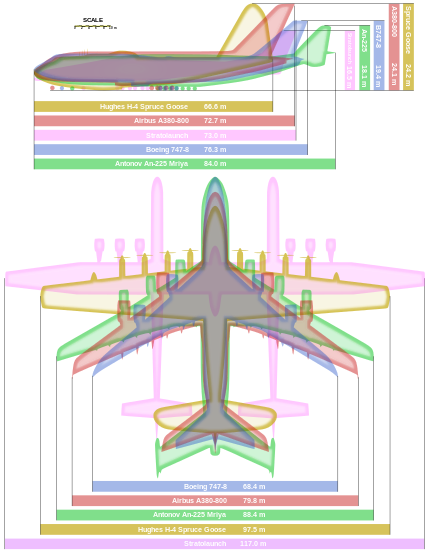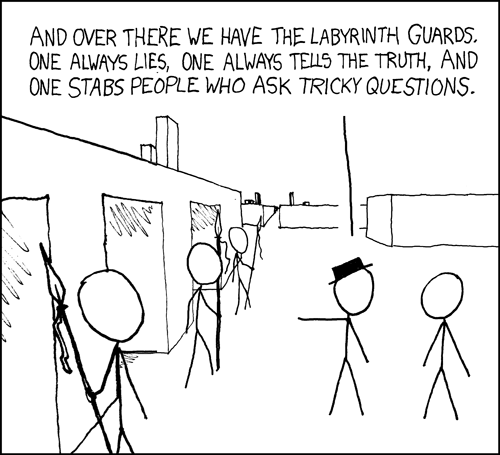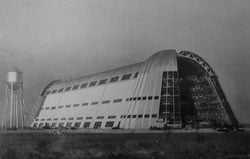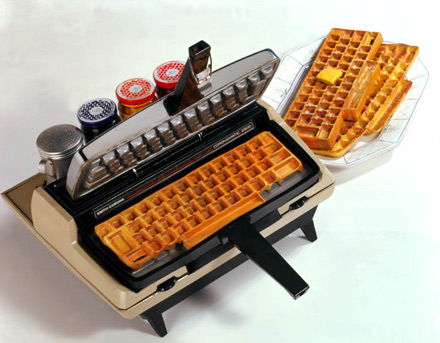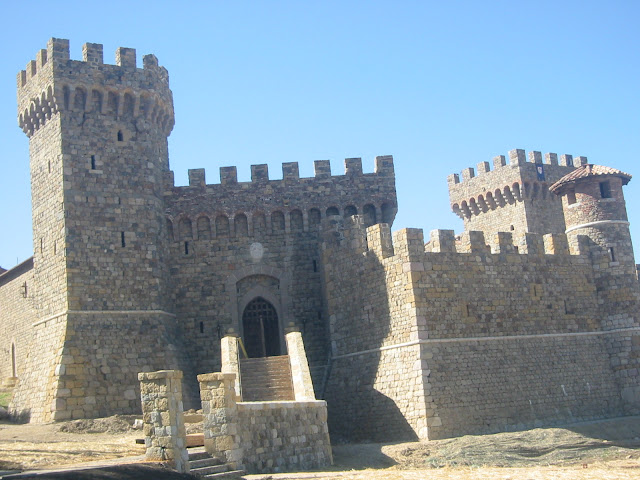(Artikel geschreven voor Agora, tijdschrift van de Katholieke Hogeschool der Kempen)Meer dan tien jaar geleden namen we afscheid van onze ouders in de luchthaven van Deurne. Wij waren net afgestudeerd aan het HIK als industriele ingenieurs electronica en waren op pad naar California voor een avontuur van vier maanden. Via een samenwerking tussen het HIK en het
International Education Program (IEP) van Foothill College in Los Altos, gingen we drie maanden lang werken en leven in California. Nadien liet ons visum ons toe nog een maand lang rond te reizen in de gouden staat. Karel Geyskens, docent Engels, was de drijvende kracht aan het HIK van de uitwisseling. De job varieerde van kampleider bij de YMCA tot een ingenieurs stage bij een eletronica bedrijf. Gelukkig had ik een job kunnen strikken als ingenieur in de communicatie groep van VLSI Technology (dat nu deel uitmaakt van
NXP, de recentelijk afgesponnen semiconductor groep van Philips.) Drie maanden lang werkte ik er in het labo aan mixed signal telecommucation chips. Van chip design had ik echter maar weinig kaas gegeten. Mijn specializatie was in digitale technieken. Chip design was nog maar net toegevoegd aan het curriculum van industrieel ingenieur en slechts een handvol ingenieurs hadden zich ingeschreven. Het midden van de jaren negentig was het begin van de "BOOM" in Silicon Valley. Nog voor mijn drie maanden voorbij waren, werd mij een permanente job aangeboden. Op het moment dat mijn collega HIKers op rondreis trokken door de fantastische nationale parken van de Westen van VS, stond ik aan te schuiven in de Amerikaanse ambassade voor een nieuw werk visum. (Ik bespaar U alle paperassen werk, maar na menige visa kende ik het immigratie systeem van de VS van binnen en van buiten.)
Mijn diploma van industrieel ingenieur werd toen vergeleken met dan van bachelor in de VS, gedeeltelijk omdat hier het Belgische systeem onbekend is. Gelukkig is dat met het verdrag van Bologna en de recentelijke besluiten in Belgie aangepast en mogen we ons gelijkstellen met het masters diploma van vele andere landen. Hopelijk hebben beide ingenieurs groepen in Belgie (VIK en KVIV) ingezien dat bachelors vs masters geen Belgische interne kwestie is, maar vooral hoe beide diplomas vergeleken moeten worden met deze van buitenlandse ingenieurs.
Na vier jaar chip design en vooral system design gebaseerd op onze communicatie chips, was ik op zoek naar een job in een echt systeem bedrijf. Ik vond een job als software ingenieur in de I/O technologies group van
Sun Microsystems. Sun was toen aan een exponentiele groei periode bezig: iedere dot-com kocht Solaris Sparc servers van Sun Microsystems en routers van Cisco. De sfeer binnen Sun was enorm goed:
work hard, play hard and kick ass. Iedereen werkte 60+ urenweek. Sun zorgde dan ook voor de entertainment: goodies, bier, chique restaurants, big parties, etc. De kater van de "bust" was des te groter. En de lessen blijven ook des te langer bij. Sun was een fantastische ervaring, met enorm slimme ingenieurs en aan het hart van vele belangrijke uitvindingen (van Network File System NFS, tot Sparc processoren, Solaris operating system en vooral Java). Vooruitgangen van dergelijk kaliber (Sun, Apple, Google, Intel, Netscape) zijn eigen aan de
no-rules-based en
can-do cultuur van Silicon Valley. Sommigen voelen zich als piraten van de vallei (zoals het
Macintosch team bij Apple). Anderen zijn meer het hippie type, en komen zonder schoenen, met lange baard naar 't werk. En er zijn er die gratis werken, en die binnen breken om hun favoriete project te voltooien, zoals Ron Avitzur vertelt in
the graphic calculator. Natuurlijk vind je ook de serieuze ingenieur in grote getalen. Veel is hier mogelijk, zelfs de naakte ingenieur -
the nudist on the late shift .
Werken in Silicon Valley heeft ook andere voordelen. Het noorden van California is een mooie streek. Het weer is aangenaam en niet zo warm als in Los Angeles of San Diego. Regen zie je niet meer vanaf mei tot soms eind oktober. San Francisco is een vrij Europese stad, van mentaliteit. Voor Surf city
Santa Cruz en de grote golven van
Mavericks moet je slechts de berg over. En in de winter ben in enkele uren rijden in de ski resorts rond
Lake Tahoe. Voor zeer goede wijn (en jammerlijk vrij prijzig) moet je naar Napa en Sonoma, een van de belangrijkste wijnstreken van de VS.
Silicon Valley mag dan wel een mekka zijn voor de ingenieur, het is hier niet allemaal rozegeur en maneschijn, zoals de bust van de dot-com bubbel ons leerde. Even snel als men aangenomen is, ligt men hier buiten, met of zonder afscheidspremie. Het leven raast hier verder tegen 200km/uur: net zoals in Belgie kloppen ingenieurs vele uren. Met het hoge tempo van vele start bedrijven en veel concurrentie wordt die soms een beetje overdreven. Slaapzakken onder de bureau is hier niet ongehoord. De vele ingenieurs (,MBAs en nu ook bio-ingeneurs) in een nauwe vallei heeft tot een schaarste aan woningen geleid. Voeg daar nog aan toe de gouden eieren van de dotcom, en je leert snel dat hier alles peperduur is. Een kleine wonig op een lapje grond met drie slaapkamers kost U snel $600000. Stuur uw 5 jaar oud kind naar preschool en U ziet uw maandelijks inkomen inkrimpen met bijna $2000. En als belangrijke Belgische prijs barometer, de prijs van de patatten is hier ongeveer $2 per halve kilo. Een pint bier (engels maat) kost U snel $5.
Na bijna acht jaar bij Sun, ben ik in het voorbije jaar overgestapt naar een klein bedrijf (60 werknemers):
Real-Time Innovations. We hebben middleware voor real-time data distribution: distributed systems die in tijd-deterministisch data uitwisselen gebruiken onze software. Bijvoorbeeld: control software in vliegtuigen en schepen, alsook het uitwisselen van stock quotes op de beurs van Wallstreet.
Silicon Valley is een echte melting pot. Slechts 2 op 10 ingenieur is blank; 1 op 20 is amerikaan van originele afkomst (en daar bedoel ik niet mee
"Native-American"). Er zijn hier veel Indische ingenieurs, meestal in de software branche. Ook veel Chinezen en Iraniers. Europeanen vind je ook overal en van alle landen. Bij RTI werken bijvoorbeeld een Italiaan, twee Noren, twee Fransen, twee Nederlanders, twee Spanjaarden en tot voor kort waren we nog met twee Belgen. De melting pot brengt ook zijn problemen mee kwestie van manier van werken en manier van communicatie. Indiers zijn bijvoorbeeld veel minder direct. Veel aziaten zullen weinig vragen stellen als hun baas er bij zit, kwestie van geen zwakte aan te tonen.
Belgische ingenieurs (alhoewel er hier maar weinig zijn) kennen een goede reputatie, vooral kwestie van algemene opleiding en basis principes. De cursussen die mij vooral zijn bijgebleven zijn (voornamelijk omdat die in mijn dagelijkse job aan te pas komen):
- heuristieken, pseudo en pascal programmeren
- (de twee uren per week en slechts twintig paginas tellende cursus) digitale technieken
- Labo met Labview en het programmeren met de 68K processor
Jammerlijk heb ik toen niet meer tijd geinvesteerd in de labos, kwestie van blijven tinkeren met de processor of die steppen motor. 't Ja, het labo meet en regel technieken was vrijdag ochtend (een pover excuus).
Enkele verschillen met de opleiding in de VS is dat hier meer nadruk wordt gelegd op:
- Presentatie en communicatie: even belangrijk als goede software code, is een goede presentatie. Niet alleen voor een sales ingenieur die direkt met klanten in kontact komt, maar ook om uw ideen te verkopen aan uw baas of zijn baas.
- Praktische ervaring: vele studenten, meestal omwille van financiele redenen, zoeken jaarlijks een zomer stage in hun branche. Sommigen gaan op zoek naar een international stage (gelijkaardig aan Erasmus) of werken mee aan een open source projekt. Die ervaring, zowels technisch als het werken in teams, maakt groot deel uit van de opleiding van vele ingenieurs.
- Elke avond zijn er hier meerdere bijeenkomsten en tutorials in een of andere user group: de robotics geeks, de python scripters, de Java junkies, de technoArtists die kunst maken van computers, linux user group (svlug), etc. Ook in Belgie vind je dergelijke groepen, maar vaak slechts nabij de grotere universiteiten. Bijvoorbeeld, BEJUG is vrij bekend.
- Entrepreneurship en studeren gaan hier hand in hand. Het beginnnen van een bedrijf wordt gestimuleerd aan de universiteit. Er zijn zelfs 'labo' projecten waar men een idee leert voorstellen aan venture capitalists (de investeerders).Er zijn trouwens genoeg voorbeelden van bedrijven die begonnen zijn als een studenten project aan de universiteit: Google of Sun (Sun staat trouwens voor Stanford University Network.)
Over de jaren ben ik wel in contact gebleven met Belgie. Natuurlijk is er de familie die af en toe op bezoek komt. Het Belgisch nieuws, nieuws over Club Brugge en o.a. Tom Boonen lees ik via de Belgische kranten online. 's Morgens luister ik naar de Belgische avondspits via Studio Brussel, of naar de Afrekening via hun podcast. We hebben hier ook een hechte Belgische vriendengroup, onder wie trouwens enkele ex-Hikkers. Belgische tradities worden verder gezet: Sinterklaas komt op bezoek voor onze kinderen. Onze kinderen spreken trouwens Nederlands (alhoewel omwille van het school, onder mekaar het Engels de voertaal is). Op het menu vind je soms koniijn, frietjes en stoofvlees of vol-au-vent. Regelmatig gaan we het Belgisch bier (van 't vat) nog eens controleren in de pubs van Palo Alto. Inbev zou ons trouwens hiervoor moeten sponsoren.
Ben je in de buurt, of zoek je contacten om een tijdje naar Silicon Valley te komen werken, laat gerust iets weten.
